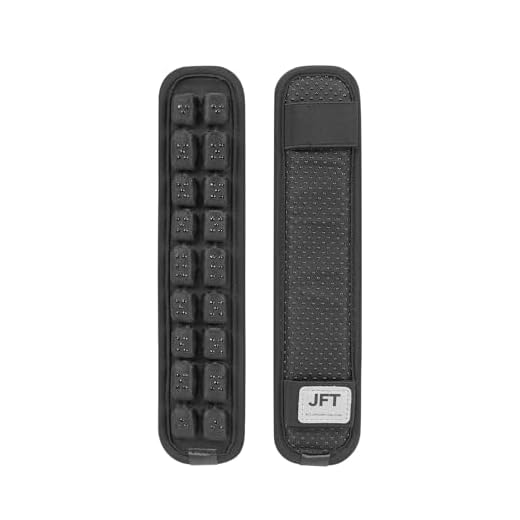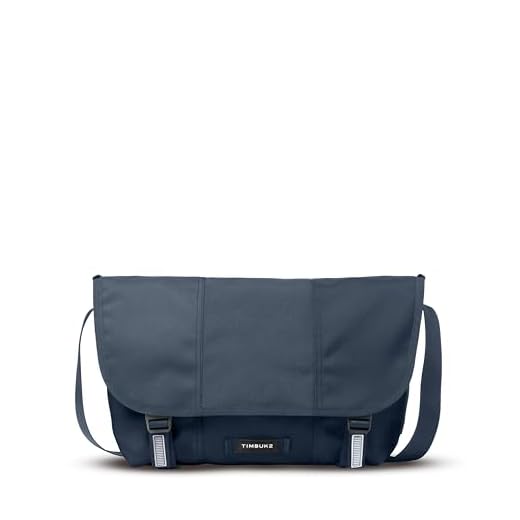



Position the strap diagonally across your body for optimal weight distribution. Ensure the larger section of the satchel rests comfortably against your lower back, keeping essentials easily accessible without excessive strain on your shoulder.
Adjust the length of the strap to achieve the ideal fit. A longer strap allows for a lower carry, which can enhance comfort during extended periods of use. Conversely, a shorter option can provide a more compact feel, which some may prefer in crowded environments.
Utilize the multiple compartments wisely. Allocate heavier items to the base and lighter accessories to the outer pockets. This strategic organization helps maintain balance and prevents shifting during movement, preserving both your posture and the integrity of the items within.
Finally, practice keeping the strap secure by using the built-in adjusters, which prevent accidental loosening. Regular checks on the tightness can enhance stability and ensure confidence in your everyday commuting style.
Choosing the Right Strap Length for Comfort
Select a strap length that allows the weight to rest comfortably against your body. The ideal position should align the bottom of the shoulder strap with the top of your hip bone. This ensures that the weight is evenly distributed while keeping the pouch secure.
Adjust for Your Frame
Individuals of varying heights may need distinct strap adjustments. If you’re shorter, a tighter setting will keep the pouch close, reducing strain. Conversely, taller users should extend the strap further to avoid a tripping hazard.
Testing for Comfort
Once adjusted, walk around for a few minutes. Make sure that the strap does not dig into your shoulder, and that the carrier remains stable during movement. If discomfort arises, fine-tune the length until the right fit is achieved. A little experimentation goes a long way in ensuring a pleasant experience.
Positioning the satchel to distribute weight evenly
To achieve balanced weight distribution, rest the strap on your shoulder directly over the collarbone. Adjust the positioning so that the bulk of the contents rests against your side, avoiding pressure on the lower back. This aligns the load with your center of gravity, thus reducing strain during movement.
Experiment with angle adjustments
Try shifting the angle of the strap and the position of the carrier’s arm to find a comfortable fit. A slight tilt towards the back can maintain stability while allowing easy access to items without the need for awkward movements.
Utilize padding and ergonomic features
Make full use of any built-in padding or ergonomically designed sections. These features are engineered to promote comfort during extended use. Test these adjustments frequently, especially after adding or removing items, to ensure optimal weight management.
Adjusting the bag for quick access to contents
For seamless retrieval of items, position the straps so that the pouch rests slightly lower on your hip, allowing for a natural reach. This placement minimizes the need to lift or tilt the bag excessively when accessing frequently used objects.
Utilize compartments effectively; ensure that essentials like your phone, wallet, or keys are stored in easily accessible pockets. This organization not only speeds up access but also maintains order in the interior.
Incorporate an adjustable flap or roll-top feature, if available. This permits swift opening without the hassle of unbuckling. A magnetic closure can further enhance accessibility while keeping contents secure.
Consider practicing different access methods while standing and walking to identify the most comfortable movements. Regular adjustments based on your activities–whether commuting, cycling, or walking–can significantly improve your experience.
For further information on optimizing your everyday carry, check out the best edc backpack for work.
| Tip | Description |
|---|---|
| Positioning | Adjust strap length for a lower hip placement. |
| Organization | Store essentials in easy-to-reach pockets. |
| Closure Type | Utilize magnetic or roll-top closures for quick access. |
| Practice | Experiment with accessing items in different scenarios. |
Combining Style and Functionality
Utilize contrasting colors and materials to enhance visual appeal while maintaining practicality. Opt for durable fabrics that resist wear and tear, ensuring longevity without compromising aesthetics.
Consider complementing outfit choices with a sleek design that aligns with your personal style. Accessories, such as a fashionable keychain or a striking pin, can accentuate the overall look while maintaining a cohesive theme.
Pockets should not only serve functionality but also act as design elements. Select a model with distinct compartments that keep items organized and easily accessible, reflecting a polished appearance.
Choose a versatile bag that transitions seamlessly from casual outings to professional settings. Prioritize neutral colors that blend well with various wardrobes, allowing for effortless integration into everyday life.
Lastly, assess the compatibility of your choice with footwear and other accessories. A well-coordinated appearance extends to every detail, reinforcing both style and practicality in your ensemble.
Maintaining Stability While Walking or Cycling
To ensure balance, position the shoulder strap diagonally across your body. This method keeps the load centered and reduces sway during movement.
Securing the Load
- Utilize any internal compartments to distribute weight evenly.
- Keep heavier items closer to your body for better stability.
- Consider using compression straps, if available, to minimize movement.
Adjusting for Motion
- As you walk or cycle, take short, deliberate steps or strokes to prevent excess swinging of the gear.
- Maintain an upright posture; this helps in managing the weight effectively.
- Take breaks periodically to adjust the load and ensure comfort during longer outings.
For functional design, explore items like the best looking umbrella stands, which can be useful for outdoor settings.
For cleaning purposes, investing in tools such as the best pressure washer with triplex pump can be an excellent way to keep your gear in top shape.
FAQ:
What are the best ways to wear a Crumpler messenger bag for comfort?
To wear a Crumpler messenger bag comfortably, adjust the shoulder strap to your desired length. Ideally, the bag should sit around your hip area. You can switch sides periodically to distribute weight evenly. When walking or biking, consider tightening the strap slightly to prevent it from swinging. Using the stabilizing strap, if your model has one, can also help keep the bag in place during movement.
Can I carry a Crumpler messenger bag crossbody, and what are the advantages?
Yes, carrying a Crumpler messenger bag crossbody is a popular option. This method allows for easy access to your belongings while providing an even weight distribution across your body. It also keeps your hands free for other activities, like using your phone or carrying another item. Plus, a crossbody style can enhance your stability as you walk or bike.
Is it safe to carry a Crumpler messenger bag while riding a bicycle?
Carrying a Crumpler messenger bag while biking is generally safe if done correctly. Make sure the bag is secured and adjusted properly to minimize movement. Strapping the bag around your waist or using a stabilizing strap can enhance safety. It’s also recommended to keep the bag lightweight to maintain balance and ensure that it doesn’t impede your range of motion while riding.
What should I consider when packing my Crumpler messenger bag for commuting?
When packing your Crumpler messenger bag for your commute, consider the items you need for the day and their weight. Start with heavier items at the bottom to keep the bag balanced. Use the compartments to organize your essentials, separating your laptop, documents, and personal items. Remember to leave some space for quick access to things like your phone or keys, which can be useful during your commute.
How can I maintain my Crumpler messenger bag to ensure it lasts a long time?
To ensure your Crumpler messenger bag remains in good condition, clean it regularly with a damp cloth. Avoid harsh chemicals that might damage the material. Store it in a dry place away from direct sunlight to prevent fading. Inspect the straps and closures often for wear and tear, and address any issues promptly to prevent further damage. Following these simple care tips can enhance the lifespan of your bag.







